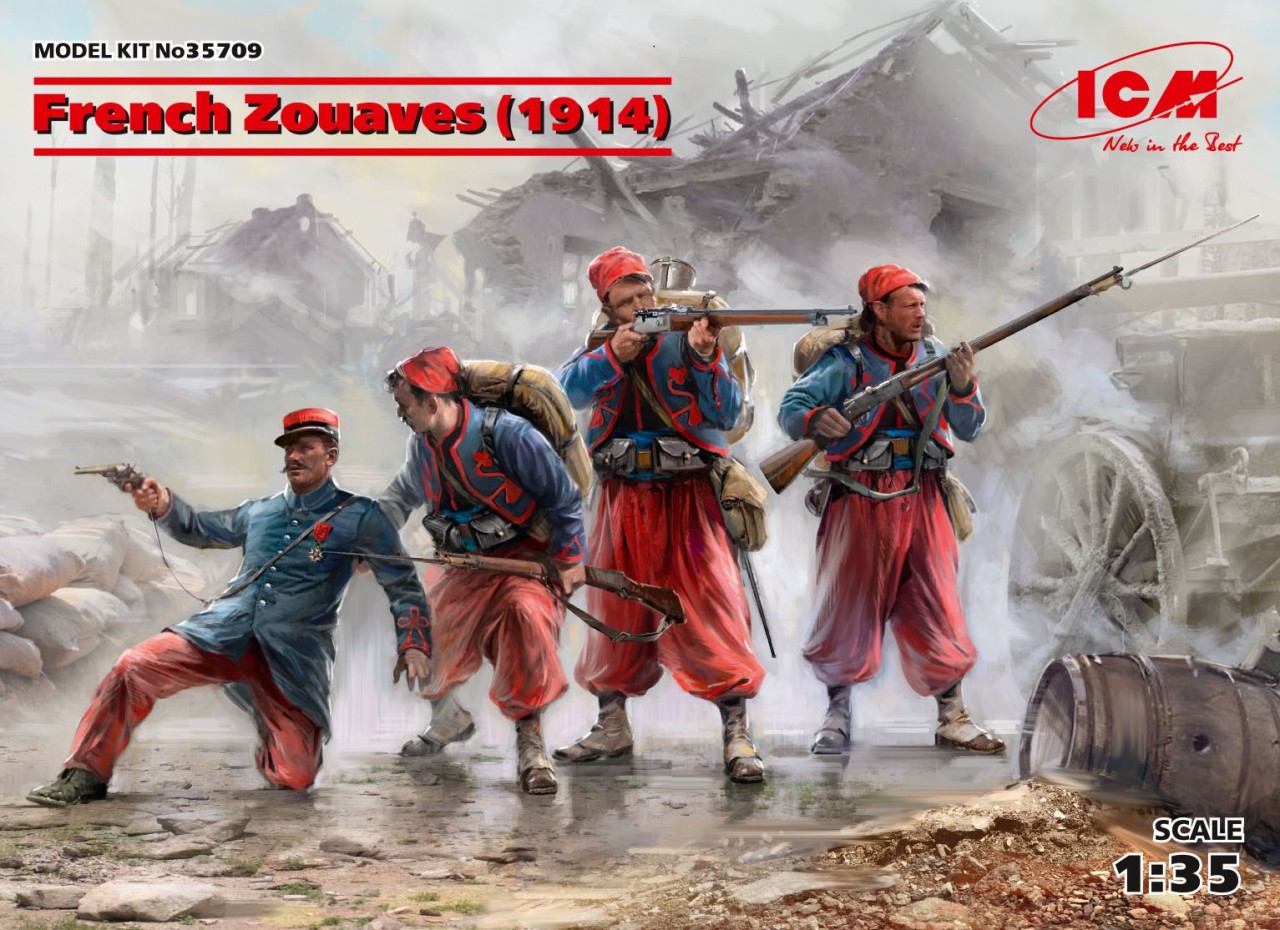
Darren Baker takes a look at the latest figure release from ICM in the form of French Zouaves 1914 in 1/35th scale.
Read the Review
If you have comments or questions please post them here.
Thanks!











The hat is called a "chechia" which was a kind of floppy fez with a tassel. It is not a cumberbund, but a waistband similar to the Foreign Legion and the alpine chasseurs.
Zouaves were native Frenchmen who lived in the colonies and some battalions were actually raised in Paris and Lyon. The different color in the circle are actually for the different regiments of Zouaves.
The colors were used by the Algerian and Tunisian Tirailleurs to indicate countries of origin. The Tirailleurs wore the same uniform as the zouaves but with a lighter blue jacket, yellow piping and red waistband.
White trousers were worn in summer and all the regiments switched to mustard khaki in 1915. In fact much of that cloth was supplied by Great Britain.
There were only slight changes in the uniform between 1853 and 1915 so with appropriate weapons the figures could be used as Zouaves or Tirailleurs in Crimea, Franco-Prussian War and 1914. Some American Civil War Zouave regiments had uniforms that closely matched the French as well.





Quoted TextThe hat is called a "chechia" which was a kind of floppy fez with a tassel. It is not a cumberbund, but a waistband similar to the Foreign Legion and the alpine chasseurs.
Zouaves were native Frenchmen who lived in the colonies and some battalions were actually raised in Paris and Lyon. The different color in the circle are actually for the different regiments of Zouaves.
The colors were used by the Algerian and Tunisian Tirailleurs to indicate countries of origin. The Tirailleurs wore the same uniform as the zouaves but with a lighter blue jacket, yellow piping and red waistband.
White trousers were worn in summer and all the regiments switched to mustard khaki in 1915. In fact much of that cloth was supplied by Great Britain.
There were only slight changes in the uniform between 1853 and 1915 so with appropriate weapons the figures could be used as Zouaves or Tirailleurs in Crimea, Franco-Prussian War and 1914. Some American Civil War Zouave regiments had uniforms that closely matched the French as well.
Steven thank you for your input but they were not French Nationals as it would appear that they were originally a tribe that was beaten by the French and agreed to fight for the French. As time progressed men from many different countries joined up due to the great record they had and it only required that the person had 2 years military service. The information on the hat is very helpful.
I also found that many countries raised Zouaves regiments including the US.





As has been pointed out, these bright colors (especially the red coats and fez hats) made good targets. By mid-war, most of the Zouave units had adopted the regular Army-issue indigo fatigue wool blouse and sky-blue kersey pants that other units wore.



Didn't we recently discuss these guys and their "Oh shoot me as I'm ever so colourful" uniforms recently? Could have sworn that we did.


And just so we're clear: the Zouaves who fought in the American Civil War (mostly for the North) were NOT in any way related to the French Zouaves other than that the Americans adopted their colorful uniforms. That's because when the war started, troops were largely raised by individuals or occasionally state militias to fill state quotas. Some of them procured their own uniforms, as well as the NY Fire Zouaves who joined up as a group and had very colorful uniforms to start out.
As has been pointed out, these bright colors (especially the red coats and fez hats) made good targets. By mid-war, most of the Zouave units had adopted the regular Army-issue indigo fatigue wool blouse and sky-blue kersey pants that other units wore. In some cases individual soldiers retained the fez, but not overall.
 |